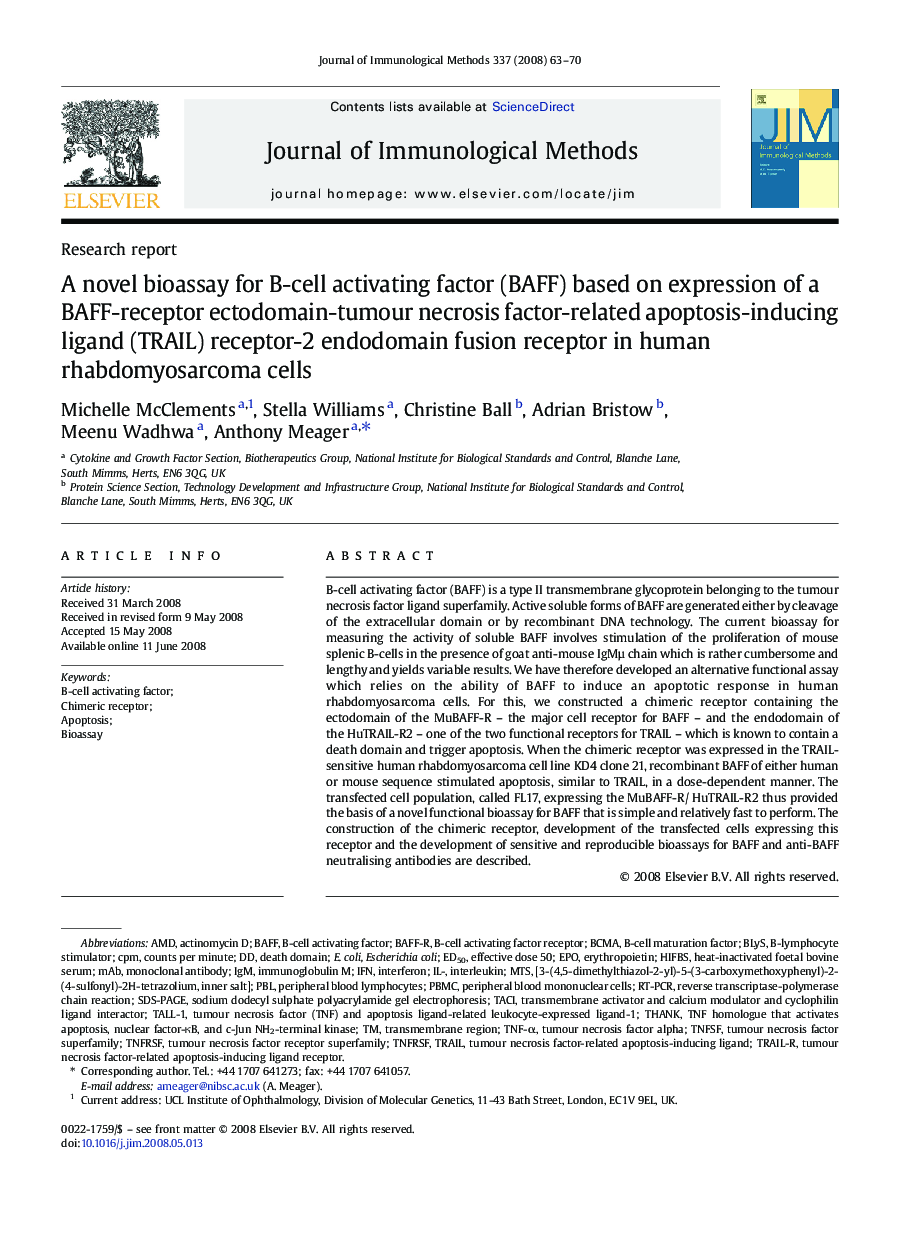| Article ID | Journal | Published Year | Pages | File Type |
|---|---|---|---|---|
| 2089197 | Journal of Immunological Methods | 2008 | 8 Pages |
B-cell activating factor (BAFF) is a type II transmembrane glycoprotein belonging to the tumour necrosis factor ligand superfamily. Active soluble forms of BAFF are generated either by cleavage of the extracellular domain or by recombinant DNA technology. The current bioassay for measuring the activity of soluble BAFF involves stimulation of the proliferation of mouse splenic B-cells in the presence of goat anti-mouse IgMµ chain which is rather cumbersome and lengthy and yields variable results. We have therefore developed an alternative functional assay which relies on the ability of BAFF to induce an apoptotic response in human rhabdomyosarcoma cells. For this, we constructed a chimeric receptor containing the ectodomain of the MuBAFF-R – the major cell receptor for BAFF – and the endodomain of the HuTRAIL-R2 – one of the two functional receptors for TRAIL – which is known to contain a death domain and trigger apoptosis. When the chimeric receptor was expressed in the TRAIL-sensitive human rhabdomyosarcoma cell line KD4 clone 21, recombinant BAFF of either human or mouse sequence stimulated apoptosis, similar to TRAIL, in a dose-dependent manner. The transfected cell population, called FL17, expressing the MuBAFF-R/ HuTRAIL-R2 thus provided the basis of a novel functional bioassay for BAFF that is simple and relatively fast to perform. The construction of the chimeric receptor, development of the transfected cells expressing this receptor and the development of sensitive and reproducible bioassays for BAFF and anti-BAFF neutralising antibodies are described.
